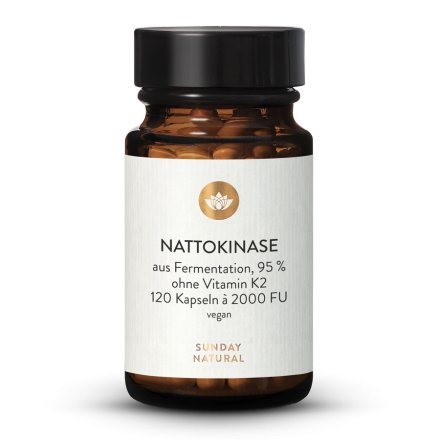Lemon Balm
Melissa officinalis is a southern European plant. Like many herbs from the south, it was first cultivated in monastery gardens and then gradually spread throughout Europe. The perennial plant sprouts in March and can grow up to 70cm tall by July and is clearly recognisable by its scent. Due to its many uses, however, it was cultivated early on throughout Europe as a popular aromatic herb. In the Middle Ages, it was cultivated in every monastery garden because it was considered particularly valuable.
Dandelion
The dandelion (Taraxacum officinale) has been known in botany since ancient times and has a number of special phytochemicals, which are mainly found in the root.
Its most important active ingredients include bitter plant compounds such as sesquiterpene lactones, which are found almost exclusively in composite plants and are produced as a defence against predators, but also act as plant hormones.
Other bitter plant compounds found in the dandelion include tetrahydroiridentin B, ainslioside and taraxacin. The plant also contains large quantities of the triterpene taraxasterol, which is believed to have numerous positive effects, as well as sterols such as sitosterol, coumarins, flavonoids, choline, B vitamins, vitamin A, potassium and inulin.
Liquorice
The liquorice root (Glycyrrhiza glabra) has been with humanity for a long time. In ancient Egypt, liquorice was consumed as a tea drink, and ancient Rome saw the first liquorice sticks. Liquorice was also popular in the Middle Ages; Napoleon Bonnaparte is said to have always carried liquorice with him. Native to Western Asia and the Mediterranean, this perennial plant can grow up to 150cm high. Only the fresh roots are harvested in autumn.
Olive Leaf
Cultivated for thousands of years, the olive tree (Olea europaea) is known as the "tree of life" and has a very special place in botany. The leaves of the olive tree are rich in phenolic compounds and are often used to brew tea. The wild olive is mainly native to the warmer parts of southern Europe, the Middle East and South Africa.
Star Anise
The star anise (Illicium verum) is native to China and Vietnam. It prefers light, sandy soils that tend to be acidic and likes partial shade or sunny locations; they grow up to 18m tall. Yellowish flowers with many petals bloom from March to May and their characteristically shaped star-shaped seeds ripen in October. In tea blends, star anise is not only a tasty flavouring agent, it can also have a positive effect on the respiratory and digestive systems.
Thyme
Thyme (Thymus vulgaris) has been known since ancient times to have vitalising and strengthening properties. In the Middle Ages, a sprig of thyme was considered a sign of courage and strength. Thyme was used as incense in many ceremonies to honour the gods. In traditional herbalism, thyme is used for many applications and it is still popular today, among other things as a Mediterranean aromatic spice.
Verbena
Verbena goes by many names, some of them very different, such as lemon bush or verbena. Verbena is native to Argentina, Uruguay and Chile; it was introduced to Europe in the 18th century and scientifically described as a separate species for the first time. As a perennial plant, verbena prefers to grow in nutrient-rich, water-permeable sandy soil with plenty of sun in a sheltered location.
Bitter Orange Peel
Bitter oranges (Citrus aurantium) are botanically considered berries, even though they visually resemble oversized mandarins. The tree is native to South East Asia, but is now cultivated in other climates such as the Mediterranean. Its leaves are evergreen, while the bitter orange Poncirus trifoliata dons a yellow dress in autumn. European monastery records have revealed a variety of methods of preservation and use of this plant; their fragrance is particularly stimulating and enjoyable.
Lemon Essential Oil
Like many other tropical fruits, the lemon (Citrus limon) originates India. The first reliable records of its settlement in Europe and Asia Minor dates back 1000 years. As an integral part of royal orangeries, this beautiful tree shines with the simultaneous bearing of fruit and buds; its sap saved the lives of many sailors and all parts of this plant are still used today. The essential oil extracted from the peel has an invigorating aroma and repels more than just mosquitoes.
















